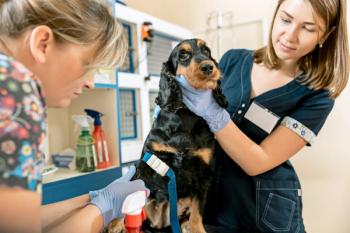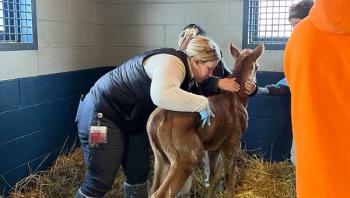
Starting salaries: A telltale for veterinary market performance
New data from the AVMA's Senior Survey suggests improving economic conditions in the veterinary market.
Each year the American Veterinary Medical Association (AVMA) surveys graduating seniors from the country's 28 veterinary colleges to learn about their post-graduation plans. This is what's known as the “Senior Survey.” Perhaps you've taken it yourself. The response to this survey has always been over 90 percent and thus provides data that can be useful in determining the relative market performance for veterinarians.
However, comparing the simple year-to-year average of the starting salary for those taking a full-time position (as opposed to an internship, residency or additional degree program or who choose “no current decision”) provides a limited perspective. Understanding how the starting salaries of new veterinarians can be used as an indicator of market performance for veterinarians requires a few adjustments to the simple average value.
For instance, starting salaries for men and women are significantly (statistically) different, with men making more. This gender difference in starting salaries during the last 14 years has been as small as a few hundred dollars and as large as several thousand dollars. The mean difference from 2001 through 2014 has been $2,842. And because the percent of female graduates has been increasing over the past 14 years, we can assume mathematically that the average starting salary will decline even further, with all other market effects being constant. Thus, looking at the simple average starting salary would lead one to conclude that the demand for new veterinarians is declining relative to the supply. But this would not be true, as the decline in starting salaries would be occurring only because of the increasing proportion of women in the market.
The same effect can be seen for type of practice and region of the country. Both practice type and region affect the average starting salary. A higher percent of graduates going to lower-paying practice types or lower-paying regions of the country would lead to a lower simple average starting salary.
If what we really want to know is how supply and demand are affecting price (starting salary), then we need to control for those factors that affect the price (gender, practice type, region) and not just the number of veterinarians.
The demand for veterinarians is an inverse relationship between the number available to be employed and the price (salary) they will receive. More veterinarians in the market will lower the price necessary to “clear the market” (that is, find employment for all those seeking employment). If the number of new veterinarians entering the market grows faster than the number of jobs available, price will go down. If the demand grows faster than the supply, price will increase.
To isolate just the effect of supply and demand on price in order to more accurately use price as an indicator of the relative scarcity of new veterinarians (rising price means increasing scarcity, declining price means decreasing scarcity) we need to use what's called a Laspeyres index. This is the way that the rate of inflation is calculated for the U.S. economy.
Inflation is an upward change in price that you and I pay for a specific set of goods or services. This set is called a “market basket.” Because the number of the various types of goods and services produced in the U.S. economy changes over time, calculating a simple average price for all goods and services does not provide a clear picture of how prices in the general economy change over time.
To get to the real numbers, a market basket of goods and services is created and used to represent the general economy. The value of that basket is computed each year. A change in the value of that basket, which always contains the same number and type of goods and services, provides a clear picture of how the price of that basket changes over time as a result of increasing or decreasing relative scarcity of the goods and services in the basket. The consumer price index that you read about in the paper or hear about on the news is a Laspeyres index using a market basket of consumer goods and services; the producer price index is a Laspeyres index using a market basket of producer goods and services.
The economics division of the AVMA has recently produced a Laspeyres index for new veterinarians using a market basket of veterinarians (a constant percentage of gender, type of practice and region). When we control for inflation, the end product is the real index of new veterinary incomes, which we call the RWI. Why is this important? Because the RWI now provides us with a price that can be viewed relative to the quantity demanded. In that way, we can use it to determine the relationship between price and quantity in the market for new veterinarians.
The indexed real income (RWI) indicates that real incomes for a cohort of veterinarians with constant gender, type of practice and region increased until 2010, declined in 2011 and 2012, and has leveled off the last two years. However, the increase in RWI from 2009 to 2010 was accompanied by a decline in the number of new veterinarians employed during that period, reaching a low of 578 with employment by the time the senior survey was conducted in early spring of 2010. Since 2012, the number of new veterinarians with employment at the time of the survey has increased, reaching a record 1,121 in 2014. Yet the flat RWI from 2012 to 2014 occurred at a time when employment more than doubled-a solid sign of improving economic conditions in the market for veterinarians.
Newsletter
From exam room tips to practice management insights, get trusted veterinary news delivered straight to your inbox—subscribe to dvm360.




